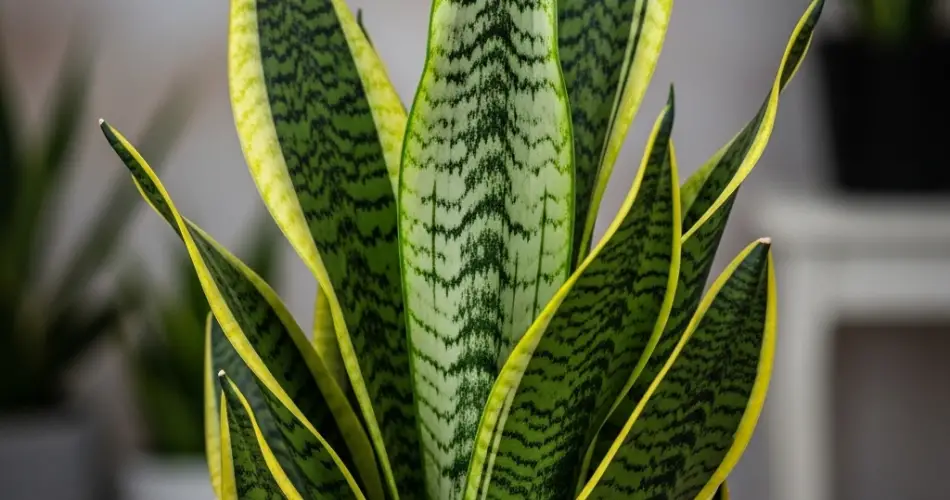Snake plants (also known as Sansevieria or Dracaena trifasciata) are popular for their striking appearance and incredible resilience. They’re the kind of plant that thrives on neglect, making them perfect for beginner gardeners and busy households. But what many people don’t know is that you can propagate new snake plants with ease — and even using scraps from your kitchen.
Yes, you read that right. With a few simple tools and some leftover household items, you can grow a brand-new snake plant without spending a dime. Here’s how to do it step-by-step, with zero stress.
Why Propagate Snake Plants?
Before we dive in, it’s good to understand why propagating snake plants is worth it:
-
Affordable: One plant can give you many more.
-
Sustainable: Reuses cuttings and scraps instead of throwing them away.
-
Rewarding: Watching roots grow from a single leaf is surprisingly satisfying.
-
Low-maintenance: Snake plants need minimal water and light.
What You’ll Need
You won’t need fancy gardening equipment. Here’s what you can use from around the house:
-
A healthy snake plant leaf (yours or from a friend)
-
Clean kitchen scissors or a knife
-
A glass jar or cup for rooting
-
Filtered or boiled-cooled water
-
Banana peel or used coffee grounds (for a homemade root booster)
-
Small plant pot and well-draining potting mix (optional later stage)
Step-by-Step: How to Germinate Snake Plant the Easy Way
1. Select and Cut a Leaf
Choose a healthy, mature leaf from a snake plant. It should be firm, dark green, and free of blemishes. Using clean scissors or a knife, cut the leaf close to the base.
Expert tip: For best results, slice the leaf into sections about 3–4 inches long. Make a small notch or mark the bottom of each piece so you remember which end was closest to the root. This is crucial because the cutting will only root from the base end.
2. Dry the Cuttings
Let the cuttings dry in a shaded, well-ventilated area for 1–2 days. This step allows the cut surface to form a protective callus, which helps prevent rot once placed in water or soil.
Rooting with Kitchen Scraps
Here’s where the kitchen comes in. Certain natural scraps act as mild rooting boosters.
Option 1: Use Banana Peel
Chop up a small piece of banana peel and place it in the water jar with the cuttings. Banana peel slowly releases potassium and phosphorus, both of which support root development.
Option 2: Use Coffee Grounds
Place a pinch of used (not fresh) coffee grounds into the water. It provides a very mild acidic environment and trace nutrients that encourage healthy roots.
Note: Don’t overdo it. A pinch is enough; too much can spoil the water.
3. Root in Water
Place the bottom end of each cutting into a jar of clean water. Ensure that only the base of the leaf touches the water — not the entire cutting — to avoid rot.
Set the jar in a bright, indirect light location like a windowsill. Avoid direct sunlight, which may overheat or burn the leaves.
Change the water every 3–5 days to keep it fresh and free of bacteria.
4. Watch for Roots
Be patient — snake plant cuttings take 3 to 6 weeks to begin developing roots. Tiny white roots will eventually sprout from the base, and small shoots may follow.
Once the roots are about 1–2 inches long, your cutting is ready to be planted.
Planting the Rooted Cutting
Prepare a small pot with well-draining potting mix. A cactus or succulent mix works best, or mix regular potting soil with sand or perlite.
Plant the rooted end gently into the soil, water lightly, and place the pot in bright, indirect light. Snake plants do best when allowed to dry out slightly between waterings.
Care After Planting
-
Water sparingly: Snake plants prefer dry conditions. Water only when the top inch of soil is dry.
-
Indirect sunlight: Avoid intense afternoon sun. A north- or east-facing window is ideal.
-
No fertilizer for the first month: Let the plant adjust and develop roots first.
Final Thoughts
Germinating a snake plant from a single leaf cutting is surprisingly simple — especially when you make use of kitchen scraps to give your new plant a natural nutrient boost. It’s an easy, sustainable way to expand your indoor garden without spending money on store-bought fertilizers or new plants.
Whether you’re propagating for yourself or to gift to a friend, this method is rewarding, low-maintenance, and totally beginner-friendly. Give it a try, and you might find yourself with a whole family of snake plants before you know it.



